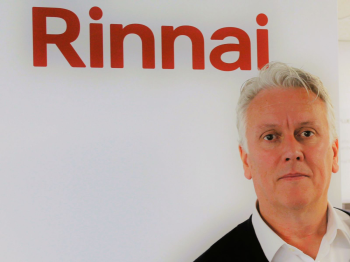Rinnai’s Tony Gittings looks at developments in the Applied Products global arena with the sector set to grow by almost 7% Compound Annual Growth Rate. He looks at the impact of these developments on the wider HVAC commercial marketplace for all those in the supply chain.
Applied Products in the HVAC sector are set to experience a global growth rate of almost 7% in the coming few years, according to a leading market intelligence & research agency. The value of the 2024 global HVAC marketplace stands at approx. $280 Billion, and it is projected to grow to $390 Billion by the end of this decade. The growth is being driven at quite a high speed – the figures represent a Compound Annual Growth Rate of 7% – which is accepted by investment experts as being a good and solid return on capital.
Furthermore, on this point – the market is being propelled by all governments instigating immediate initiatives to encourage individuals, bodies, institutions, industries and all developments big and small to use energy-efficient HVAC devices in all their work areas and homes. The renaissance and resurgence can be seen from the fact that in the 1980/90s there was a marked move from centralised to decentralised plant. Now the move is back to centralised systems.
The industry growth, as mentioned, is being hard driven into the energy transition by global demand for more and more energy efficient and acceptable HVAC products and systems which are non-carbon fuelled and, in the case of refrigerants, as least harmful as possible – hence the proliferation of R290 low GWP refrigerant.
This sea change is making the industry take on the challenge of an inevitable reset. Gas-fired appliances such as commercial and residential boilers will be on the descent with ever decreasing market share.
Electricity appears to be placed as being the dominant globe fuel of the future but with Hydrogen, synthetic, Liquified Natural Gas and BioLPG being actively developed for the mass markets. Electricity will be generated from a variety of sources, but nearly all of them will be renewable and sustainable sources such as solar thermal or heat pump appliances.
For the building services consultants, designers, larger M & E contractors and end users it could mean that they will adapt to this changing market by asking more from others in the supply chain. I have spent my career – almost 45 years now – in product manufacturing and I have never seen a greater need for flexibility and versatility from the manufacturers and suppliers. Also, I want to give special mention to specialist HVAC Sales Engineers – these are highly skilled and experienced problem solvers who help customers understand Applied Products and how they can be efficiently and optimally utilised. These practitioners also select products and prepare proposals for clients which include quantifiable data to support HVAC systems offered.
The HVAC manufacturer will need to be a true partner to all those in the design, installation and commissioning sector. We will need to offer design; full evaluation of each site in terms of practical, economic and technical considerations; full quantitative data on CAPEX, OPEX services and life cycle costings.
At Rinnai we offer all these services within our mantra of ‘Creating a Healthier Way of Living’.

Rinnai’s H1, H2 and H3 range of products include domestic and commercial heating, hot water provision products, appliances and systems in all fuels – gas, blends, BioLPG, electric, solar thermal pumps that offer immediate decarbonisation. Rinnai is determined to provide UK customers with cost effective low carbon solutions towards domestic and commercial hot water and building heating provision.
